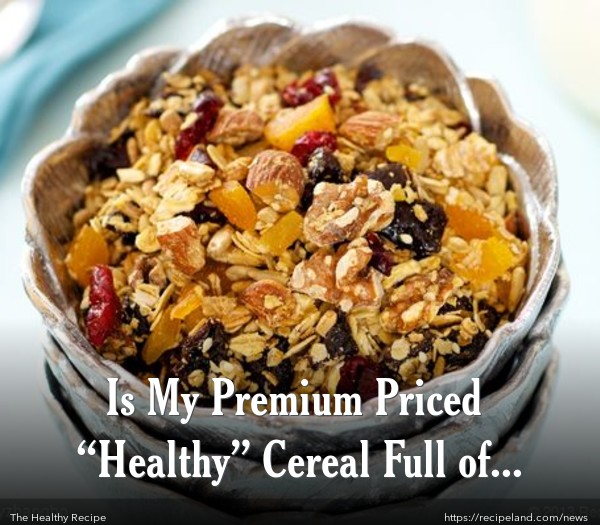Do you pay a high price for cereal that claims to be healthy? Are you really munching on sugar and sodium instead of wholesome goodness? Keep reading to find out if your cereal passes the nutrition test and find delicious - and healthy - recipes featuring cereal.
The Anatomy of a Healthy Cereal:
Fats: No cereal should ever contain large amounts of fat. All cereal should be considered low-fat, so be suspicious of cereal that boast this claim on their labelling - they are probably trying to divert your attention from unhealthy ingredients.
Cereal should also never contain partially hydrogenated oil. If a boxed cereal you are considering claims that it contains no partially hydrogenated oil, be suspicious.
Granola could include higher amounts of fat if it is made with nuts. The fat found in nuts is a healthy fat, as long as it is eaten in moderation. Granola also has fat from the oil used to protect it from burning as it bakes or toasts. Check the ingredient list to see what kind of oil was used as the granola was baked or toasted. Choose granola that is baked with healthier oils, like canola oil.
Fiber: Try to find a cereal you enjoy that includes at least 3 grams of fiber per serving, although 5 grams of fiber is best. Make sure that the fiber included in your cereal is not manufactured. Your cereal should be made with fiber from whole grains or bran, not from heavily-processed oat fiber or corn fiber.
Your digestive tract needs fiber to function properly. Eating the daily recommended amount of fiber can also lower your risk of developing type 2 diabetes and heart disease. Eating a cereal with a good amount of fiber will also keep your body full and fueled for your morning activities.
Whole Grains: Pick a cereal that lists whole grain or a type of whole grain as its first ingredient. A diet rich in products made with whole grains can lower your risk of developing heart disease, certain types of cancer, and type 2 diabetes. Eating whole grains can also lower the amount of chronic inflammation throughout your body and promote good digestion.
Dried Fruit: Cereals featuring dried fruit will have a higher sugar content. Don’t worry about it as long as the fruit has not been sweetened with added sugar. Dried fruit adds naturally occurring fiber and sweetness to your cereal. Use a serving dried fruit to add flavor and fiber to your favorite unsweetened hot and cold breakfast cereals.
Cereal Specifics:
Unsweetened Cereal:
A healthy, unsweetened cereal should have less than 130 calories and less than 250 milligrams of sodium per ½ cup serving.
Sweetened Cereal:
A good sweetened cereal should have less than 100 calories, less than 6 grams of sugar, and less than 250 milligrams of sodium per ½ cup of cereal. Add unsweetened breakfast cereal to your favorite sweetened breakfast cereal to give it a nutritious boost.
Hot Cereal:
Choose a hot cereal should that contains less than 2 grams of sugar per 100 calories and less than 80 milligrams of sodium per 100 calories. The type of cereal you are eating should be the first ingredient. For example, oatmeal should have oats listed as the first ingredient and grits should have corn at the top of the ingredient list.
Granola:
Granola should have less than 140 calories and less than 5 grams of sugar per ¼ cup. Turn your favorite healthy breakfast or granola bar into a cereal by crumbling it and eating it in a bowl with milk.
Remember: You will always make a healthy breakfast cereal choice if you look for a cereal that is packed with whole grains, low in sugar, high in fiber, and made without artificial sweeteners.
Source:
https://shine.yahoo.com/healthy-living/pick-healthiest-type-cereal-195900715.html
https://www.cnn.com/2012/07/06/health/time-healthy-breakfast-cereal/
Recipes:
Multi-Grain Hot Cereal For Crockpot
Sunny Breakfast Couscous Cereal
Raisin’N Orange Oat Bran Cereal
Dried Fruits and Nuts Granola Bar










Comments